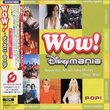| All Artists: Antonio Caldara, Aura Musicale Budapest, René Clemencic Title: Caldara: Missa Dolorosa - Stabat Mater / René Clemencic Members Wishing: 0 Total Copies: 0 Label: Naxos Release Date: 8/15/2000 Genre: Classical Styles: Opera & Classical Vocal, Historical Periods, Baroque (c.1600-1750), Early Music, Symphonies Number of Discs: 1 SwapaCD Credits: 1 UPC: 636943471524 |
Search - Antonio Caldara, Aura Musicale Budapest, René Clemencic :: Caldara: Missa Dolorosa - Stabat Mater / René Clemencic
 | Antonio Caldara, Aura Musicale Budapest, René Clemencic Caldara: Missa Dolorosa - Stabat Mater / René Clemencic Genre: Classical
|
CD DetailsSimilar CDs
|
CD ReviewsAnother Stunning Stabat Mater Giordano Bruno | Wherever I am, I am. | 03/09/2009 (5 out of 5 stars) "Antonio Caldara (1670-1736) was another Italian who found his musical wonderland and wrote his best music as "vice-chapelmaster" at the devoutly Catholic and even more devoutly Italianate Hapsburg court in Vienna, arriving in 1716, writing at least 60 operas and 36 oratorios as well as masses and cantatas, making extravagent use of the largest and most virtuosic musical forces in the world at the time, but forever in the shade of Johann Joseph Fux, the Kapellmeister. Of all the Italian Baroque masters, Caldara most resembles JS Bach, or vice versa since Caldara was 15 years older, in his musical manner, showing the same predilection for dense and difficult counterpoint, the same sweeping structural conceptualization, the same instinct for chromatic drama. In fact, if you've ever doubted that Bach was really an Italian named Giovanni Sebastiano, listening to this CD, especially the Missa Dolorosa, may dispel your uncertainty.
While Vivaldi set his Stabat Mater for one voice and Pergolesi his for two, Caldara uses five - two sopranos, alto, tenor and bass - in varying solos, duets, and coros, with elaborate instrumental color. Only the twelfth verse, 'Fac ut animae donatur,' is thoroughly contrapuntal. The Missa Dolorosa, written for the Feast of the Seven Sorrows of Mary in 1735 - newly instituted in the liturgical calendar by Pope Benedict XIII - is wildly chromatic and as 'old-fashioned' in its fugal complexity as anything by Bach, with intricate instrumental obbligatos galore and with four excellent soloists SATB. Do, please, pay attention to the bassoon passages in the Gloria and elsewhere! The combined forces of the Swiss Radio Chorus, under Diego Fasolis, and Aura Musicale Budapest, under Rene Clemencic, with Fasolis conducting, perform these two massive compositions with total technical security and robust expressiveness. This CD is a tremendous bargain from Naxos, the CD buyer's best friend." |

 Track Listings (20) - Disc #1
Track Listings (20) - Disc #1